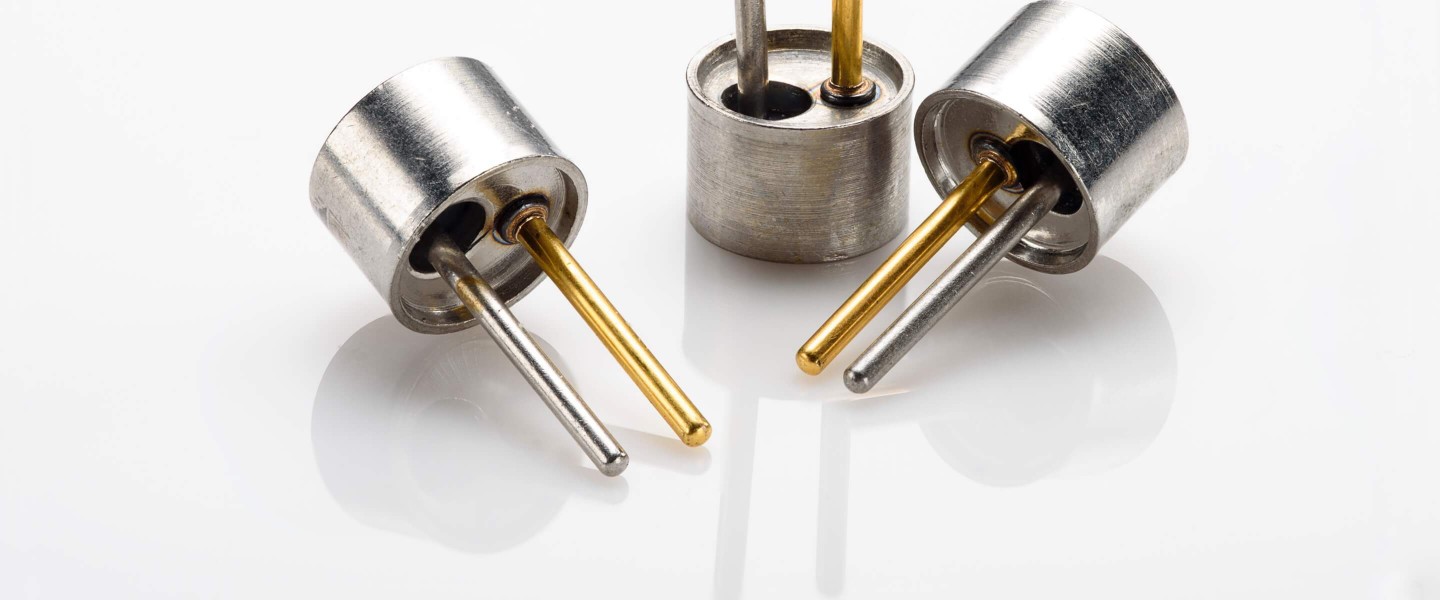The pin on the right shows a standard 0.018” diameter by 0.5” long straight pin with straight cut ends and made of Kovar. The extreme left is a lead in pin (note its rounded end) also made of Kovar. The two pins in the center were manufactured from stainless steel with tapered ends.
Form Cut manufactures millions of straight pins, terminal pins, hermetic pins, and connector pins annually. Sizes range from the ultra small — .020″ in length – to strip as wide as 2”. Materials include all formable metals; specialty hermetic sealing alloys such as 52 Alloy; Kovar®; nickel & nickel alloys; 426 Alloy; all grades of stainless steel; and copper and brass alloys, as well as pre-plated materials and precious and exotic alloys (Platinum/Iridium, Niobium).
We can also combine multiple processes depending on your application, including stamping, bending, milling, and machining.
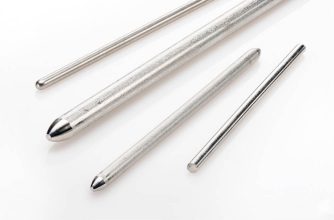
Straight Pins
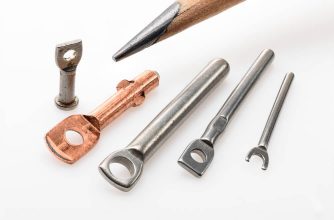
Pins with Cutouts
With their flattened and pierced ends, these types of pins are used for threading wire through the opening or cutout and then soldering it. The four non-copper pins are made from 52 Alloy, a metal used for glass or hermetically sealed assemblies. Pictured sizes range from 0.030” to 0.093” diameter by 0.5” to 0.75” long, but are available in diameters ranging from 0.020″ to 0.156″, and lengths from 0.200″ to over 5″.
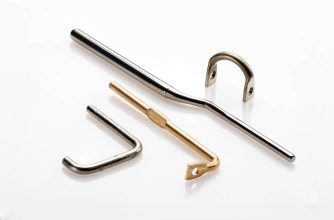
Bent Pins
The longer bent pin is manufactured from 0.060” diameter stainless steel wire; this 1.25” long pin is bent twice (offset) and machined down so that it tapers to 0.040” diameter. The two legs are parallel to each other within 0.002 of an inch. The yellow pin is made from phosphorous bronze material for use in a plastic molded switch. A precious metal contact is swaged into the hole, and the flattened section keeps it from turning in, or being pulled from, the plastic substrate.
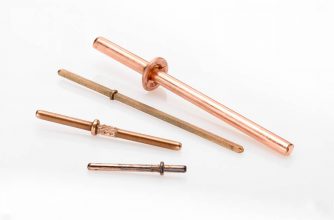
Copper Pins
Used in electronic components and circuit boards, these copper pins have various unique features. The square copper wire pin has a chamfered end and upset feature (collar) for locating the pin on a circuit board. The 0.025” diameter pin directly below it features a roughened or knurled area that’s 0.030” in diameter. This feature keeps the pin from spinning or turning when plugged into a circuit board.
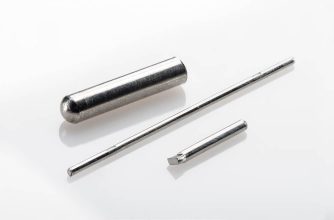
Small Pins
Don’t let the photo fool you – these pins are incredibly small! The center pin is 0.0176” in diameter by 0.75” long. The pin features two flattened areas to speed manufacturing: as the molten glass flows into the assembly recess, the engineer doesn’t have to look in a microscope to ensure the end is oriented correctly – meaning, either end will work. The pin to the left of it features a radius end and a square cut on the other – with the radius end inserted into another component. The pin to the right also has a radius end plus a flattened end to which contact wire is welded. These three pins were made from sealing alloys.
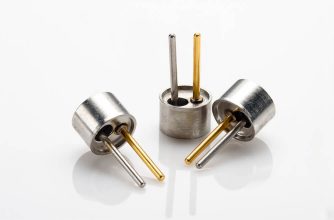
Pin Assembly
Although we make only the pins, this photo shows a completed pin assembly used in air bag detonators. The steel pin is a hermetic seal; the gold-plated pin is a welded ground pin.

